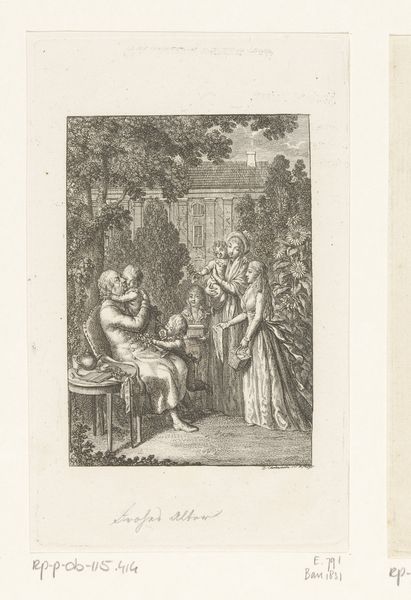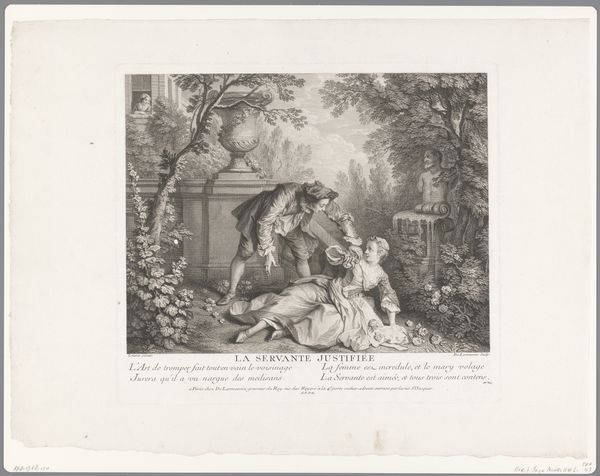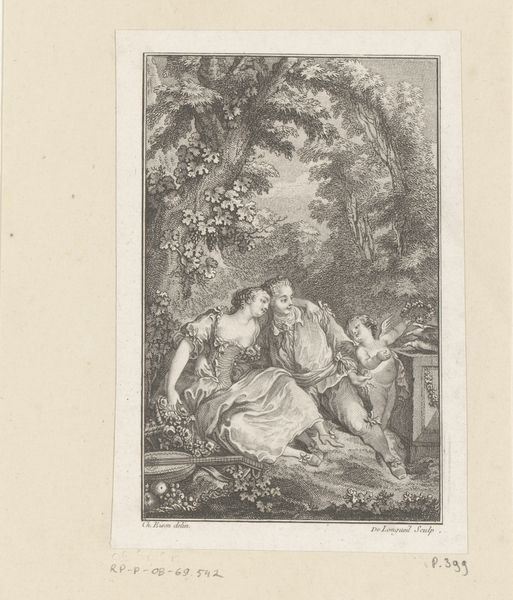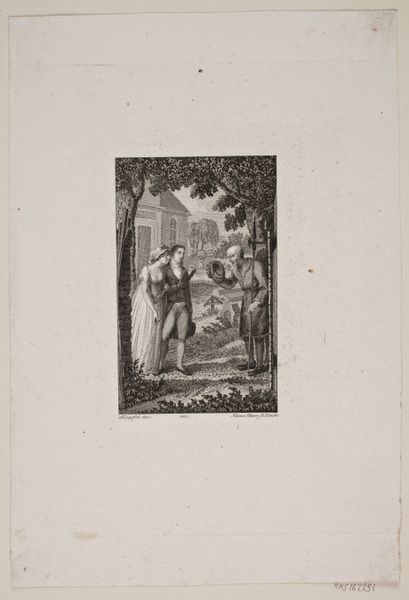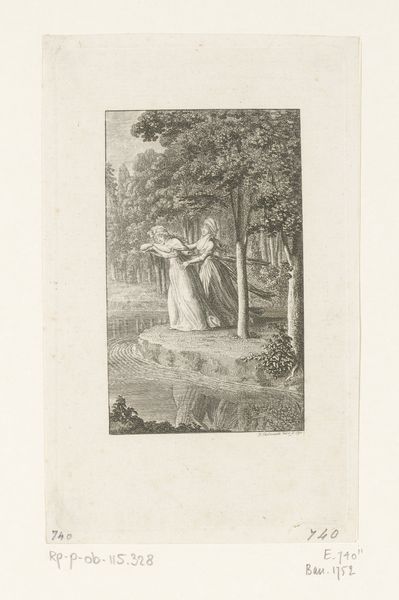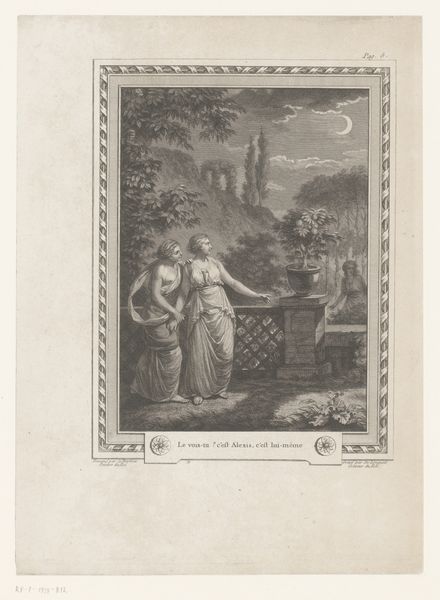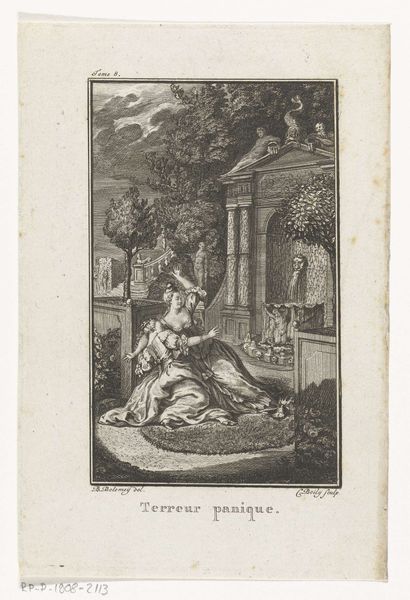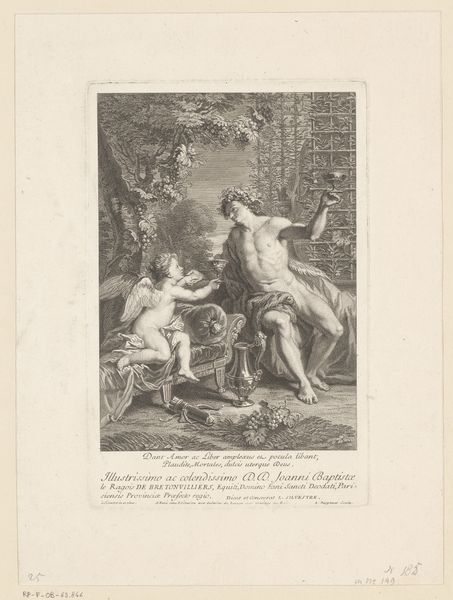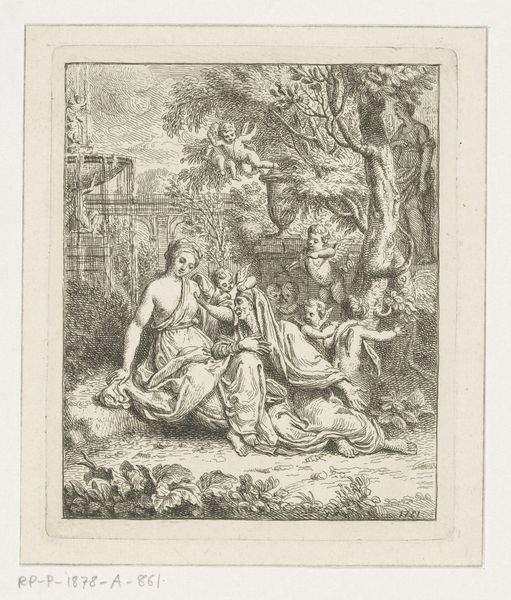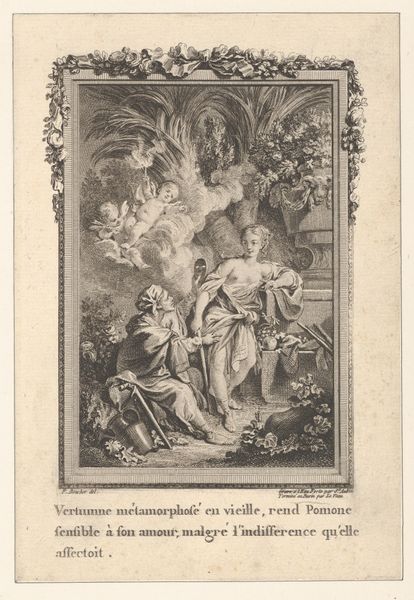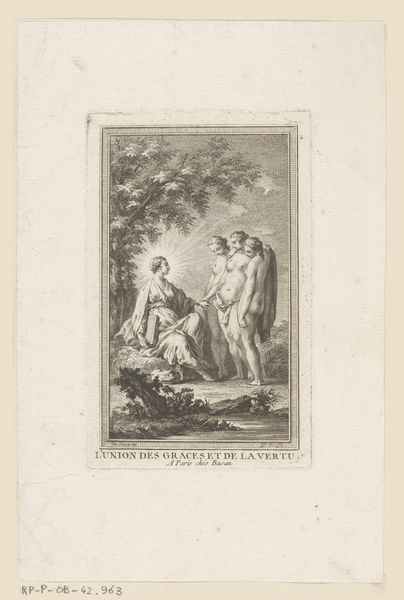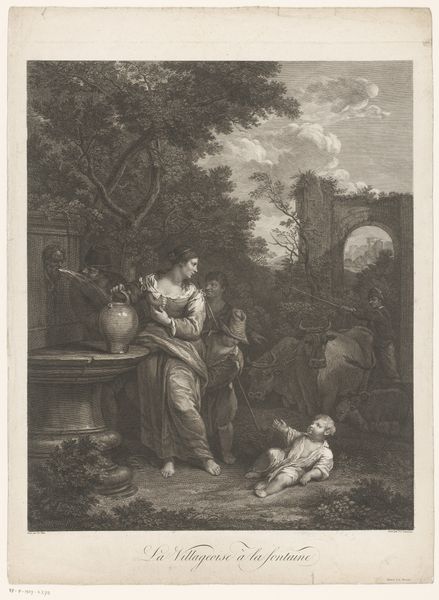
Dimensions: height 495 mm, width 378 mm
Copyright: Rijks Museum: Open Domain
Curator: What a captivating engraving! Created around 1771 by Nicolas Dufour, it's titled "Man biedt een vrouw in een tuin een bloem aan" which translates to "Man offering a flower to a woman in a garden." The work encapsulates elements of the Baroque style within a garden scene. Editor: Immediately, I’m drawn to the balance between light and shadow. The artist’s careful application creates this captivating interplay. I'm especially compelled by the crispness of lines giving form to trees, costumes, even flower petals. Curator: Indeed. This piece acts as a lens into the socio-cultural dynamics of its era. The depiction of the man presenting a flower isn’t merely a symbol of affection but is suggestive of courting rituals embedded within the structured societal expectations around gender, particularly the expectation for women to be gracious, and the requirement for men to be gallant. Editor: Speaking structurally, it’s fascinating how Dufour organizes the garden. He sets a formal scene with the urns and manicured plants juxtaposed by the surrounding wild foliage. The texture of the engraving makes those tonal and textural relationships vivid; I notice the vase echoing the shapes within the trees' depths. Curator: This contrast subtly reinforces the societal structure with the woman placed centrally as a figure, receiving the offering of a flower in the carefully designed space of privilege. One cannot miss the power dynamics subtly at play when considering the male figure in action offering, with the female sitting, a picture that certainly reflects certain historical realities regarding gender roles and interactions in courtship, especially around marriage. Editor: The engraver really masterfully utilizes the visual vocabulary of his era, even in a work with so little obvious ornamentation. His choice of the figures' positioning invites the eye to move through the plane, noting texture. The material nature of the artwork adds to this—lines, composition and tonal control invite close looking. Curator: Agreed. Considering Dufour's printmaking we gain unique access into not just Baroque styles, but deeper themes regarding gender that echo to this very day in certain social rituals! Editor: A compelling analysis. Ultimately the structure reveals as much about society’s stagecraft, where this subtle yet deliberate rendering underscores a period's conventions and sensibilities.
Comments
No comments
Be the first to comment and join the conversation on the ultimate creative platform.
